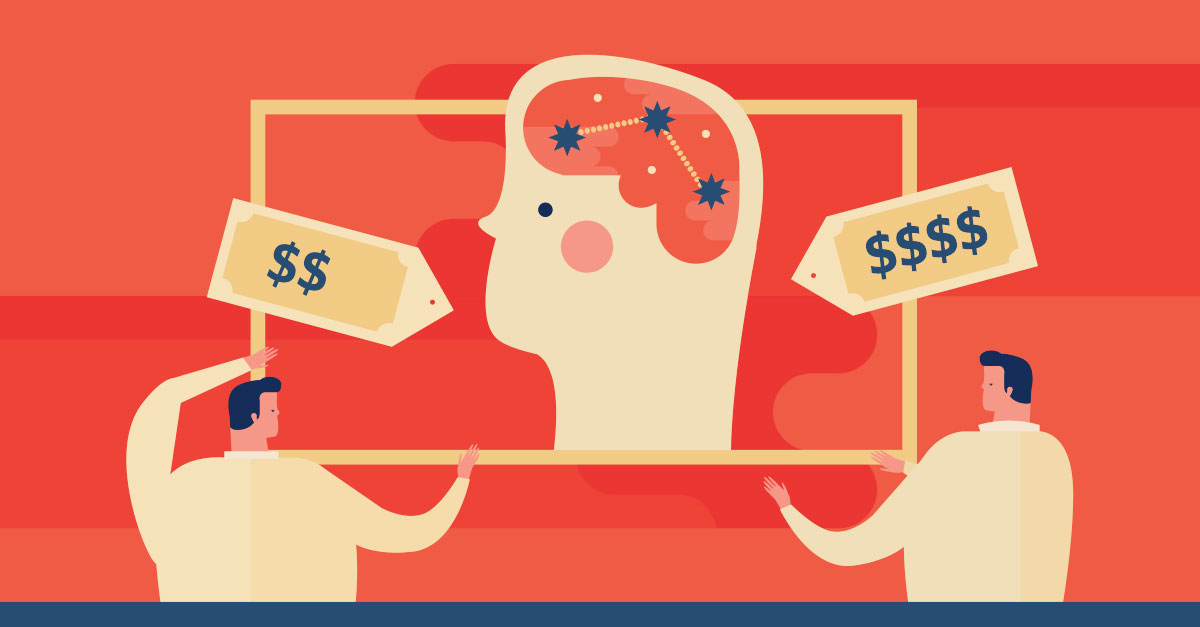
The Psychology of Marketing – The Tactics That Make Us Buy Every Time
Marketing is like sales. Us marketers don’t necessarily want to admit it, but we are highly educated salespeople, who have been trained with the knowledge of buying psychology and given the tools to play on these. Understanding The psychology of marketing (particularly why people buy) is what makes us good at what we do. If we don’t have a basic understanding of these things, then we’re not doing our jobs effectively. After all, how will we make a compelling marketing campaign if we don’t understand why it’s compelling in the first place? The fact of the matter is, being able to sell a product to a user means using a few different psychological tactics, ones that are usually guaranteed to make a sale.
Social Proof
Everyone is a sucker for this one. Even me. It’s the theory that people will adopt the beliefs or actions of a group of people they trust. Think about it. How many times have you gone on Google to read restaurant or movie reviews? You’re more likely to choose to go to a restaurant or movie if it has 5-star reviews.
The same concept can be applied in marketing, particularly on company websites. Brands are more likely to receive a customer if they have reviews from other customers on their page, front, and center. The other way to achieve this is by growing followers, likes and shares on your social media. In today’s day and age, large numbers of interactions on your social media is the social proof other users are looking for. The more interactions you have, the more likely people are going to be to use your business. We’ve even written a blog on how to increase your social proof on Facebook ads here.
Target the Emotional
There have been many studies that have shown that pulling on people’s heartstrings and appealing to their emotions will generate more conversions. People are more likely to buy if ads and marketing are worded in a way that shows the value benefit of a product, as opposed to the features of the product. This is particularly true when you target positive emotions and not negative ones. For example, demonstrating the way a service will aid in the growth of your business is more likely to get sales than demonstrating the features of the service.
Scarcity
You’ve heard of supply and demand, right? It is the principle where the rarer the opportunity or product, the more valuable it is. You’ve definitely seen this before – particularly when you’ve been searching for flights. Ever looked at flights and seen the tagline ‘Hurry! Only 5 seats left at this price!’ Your immediate reaction is to hurry to get your credit card and buy the tickets. This is scarcity at it’s finest use.
However, making people convinced of the value of a product is in the wording of the ad copy. For example, if you word an ad as ‘there used to be a lot of this product, but due to popular demand there are only a few items left’ , people will be rushing to buy the last of the product. If you approach the psychology of marketing from the angle of ‘there were only a few items made, so get it now while still available’, the marketing won’t be as effective because it doesn’t make the item seem scarce due to over-demand. You might not get the turnover rate you want. Wording your ad to make the item more desirable is key to the success of this principle.
Reciprocity
Have you ever really wanted to go out of your way to help someone who has previously helped you? You’re not alone; it’s because human beings are designed to reciprocate actions of perceived generosity. The old ‘you scratch my back, I’ll scratch your back’. It’s an important trick you use when thinking about the psychology of marketing
The Hare Krishnas have perfected this to an art form. They knew that people are programmed to give back if something is given to them. It’s why they will always give you a flower before asking for donations. That’s it. Something so simple, and yet so effective because people were much more likely to give them higher donations in return for a flower. Better yet, you’ve experienced this more commonly than you think. You know when a restaurant gives you a mint with your bill? That’s right, you have just been hit by the reciprocity angel. You are much more likely to leave a higher tip because you have perceived a higher level of service than if you hadn’t been given a mint.
There are many ways to take advantage of reciprocity in marketing and sales. It doesn’t have to be anything expensive (as we have learned from free flowers and mints), something small that will connect you to the user. A free ebook or a handwritten note goes a long way to establish reciprocity. The key is to give the free thing away before you ask for something in return.
Priming, or Association Theory
Remember at school, when you used to play the association game? The game where one person says a word and the other person must immediately respond with the first thing that comes to mind? In psychology of marketing that is association theory or priming.
In marketing, priming is used as a subtle technique to help website visitors remember key information about brands, and maybe even influence buyer behaviors. For example, a study completed by Mandel and Johnson (Journal of Consumer Research, 2002) found that users were more likely to focus on the cost of a product if they have been primed to focus on money due to a website’s color background being green with pennies on it. An example of this? You see an apple on a website. What do you think of? You’re likely to straight away think about the technology giant Apple and its products. It’s why these are strategically placed in specific areas of websites or even TV shows.
Reposition Your Competition
We as people have a limited amount of free space in our brains. It’s why successful campaigns aim to make sure that they can position themselves in an ideal and available spot in people’s minds. Repositioning is changing the position (or the way they are portrayed) in a customer’s mind.
A good and very successful example of this is the Apple vs PC campaign. A number of years ago, Apple ran a campaign in which it portrayed their Macbook computers as young, trendy and inspired, compared to PC’s dull, boring and prosaic computers. They even featured two characters: a Bill Gates lookalike who was equally dull, against a Steve Jobs-like character who was young and hip. Since then, Macbooks became associated with the technology of the future and the brand of innovation. Smart, huh?
Promote Exclusivity
Everyone has an ego, everyone. Catering your customer’s ego is a good way of stroking that emotional need to feel special. So, positioning your product as something that is special only to them will make them want to buy it. It promotes the feeling that they are exclusive and that because they are exclusive, they can use your product. That’s it. As simple as that – you cater to the emotional side of the person, and you have the person hooked. A good example of this is when companies use ‘membership’ as a way of getting special privileges and offers that members of the general public aren’t entitled to.
Introduce Fear and Doubt
Have you ever done something because of the fear of missing out on it? This is because some smart marketers (or maybe one of your smart friends) introduced the idea of fear and doubt in your mind. Sure, positive emotions always trump negative emotions, it’s why people use positive emotional stories to sell products (as we mentioned above). However, loss aversion is a powerful psychological motivator that will make people purchase your product because of a fear of missing out or because they want to avoid the negative consequences of not purchasing your product. A good example of this are computer anti-virus products. They target users by saying ‘if you don’t get me, your computer will die.’ So you automatically think that you need to buy their product.
Being able to use smart buying and selling. The psychology of marketing is the best way to improve your marketing. The trick is knowing how to target your ideal audience with the correct psychological marketing tactics necessary to drive sales and increase conversion rates. Just using any of the above techniques can substantially improve your ad copy and marketing strategy – go ahead, just give them a go!
I hope you liked our article about the psychology of marketing Don’t forget to check out our בלוג sign up for our newsletter in order to receive valuable tips and tricks about marketing and business in the digital area.
Until next time—stay healthy and positive!
